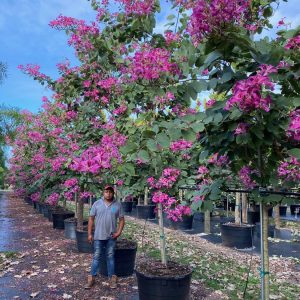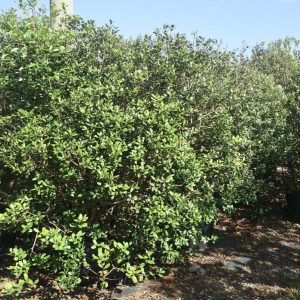Description
Zanthoxylum coriaceum (Prickly ash) is a Florida native, small to medium sized tree or large shrub. Biscayne prickly ash grows to 10 to 20 feet in height and spreads in width equal its height. Moreover, it forms a cylindrical, moderate to dense, crown of numerous irregular shaped branches, which bear sharp, hooked spines. The bark is gray and rough. Additionally, the leaves are bright green, deciduous, compound, alternate with 5 to 9 leaflets. The leaflets are oval to elliptical, have a notched tip and wings along the rachis, and measure about 2 inches long. Crushed leaves give a citrus odor, an indication that it is a member of the citrus family.
Furthermore, male and female flowers are found on separate trees. The fragrant flowers are small, inconspicuous, green-white in color, and are borne in terminal clusters that attract pollinators. The shiny fruit is a fleshy round capsule, red in color but ripening to black. In addition, the fruit is about 1/2 inch in diameter, and has a single black seed. The birds feed on the fruits and the seeds are used for propagation. Additionally, the leaves and bark can be crushed to make a tart condiment, and to make medicinal tea. While, the yellow wood (zanthoxylum) is used to make furniture.
Garden tips
Zanthoxylum coriaceum (Prickly ash) can be grown in moist sandy or limestone soils with good drainage, and a surface layer of organic matter. Once established it is quite hardy. In landscaping, the appealing foliage and fruits make Zanthoxylum coriaceum (Prickly ash) a good choice as a specimen or accent plant in seaside gardens and parks, and in a native plant garden. It can be formed into a hedge, grown in a container, and is suited to buffer strips around parking lots or median strips. Wild populations of this tree in Florida are endangered.
Other names: Biscayne prickly ash







